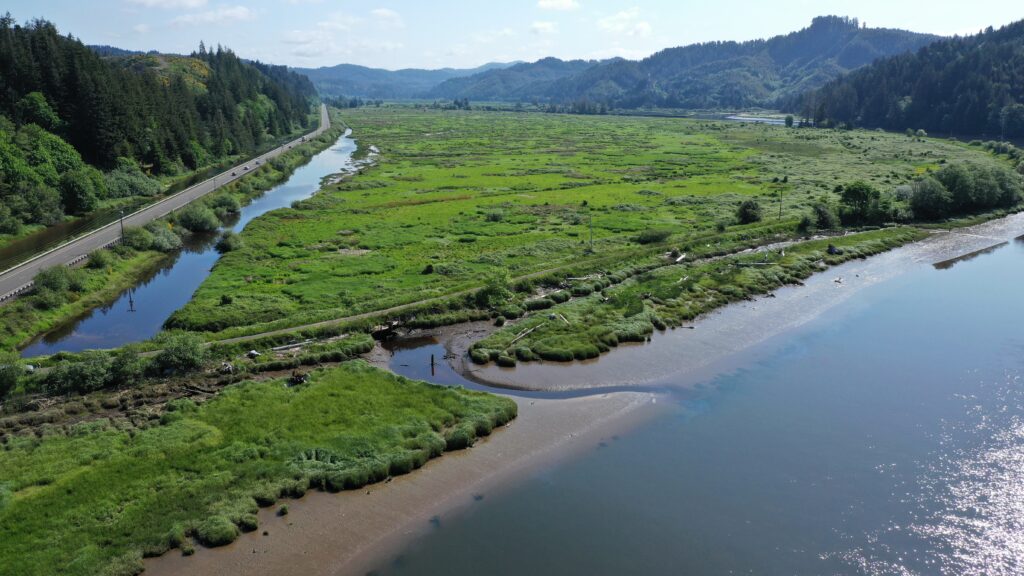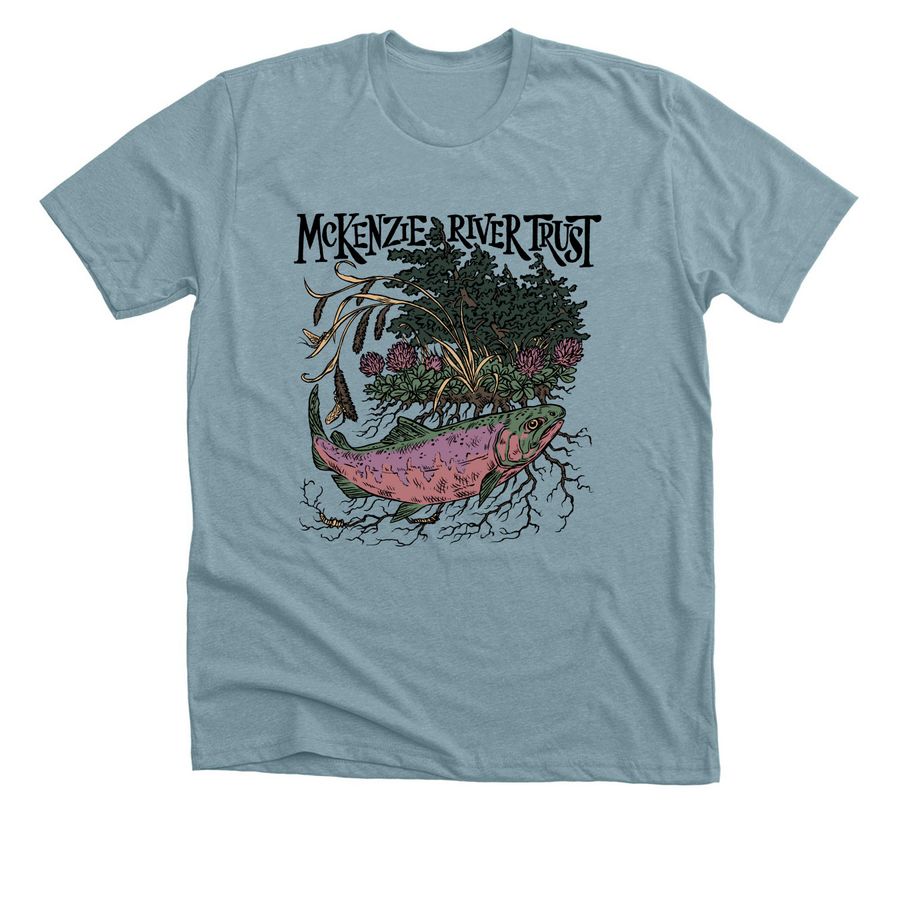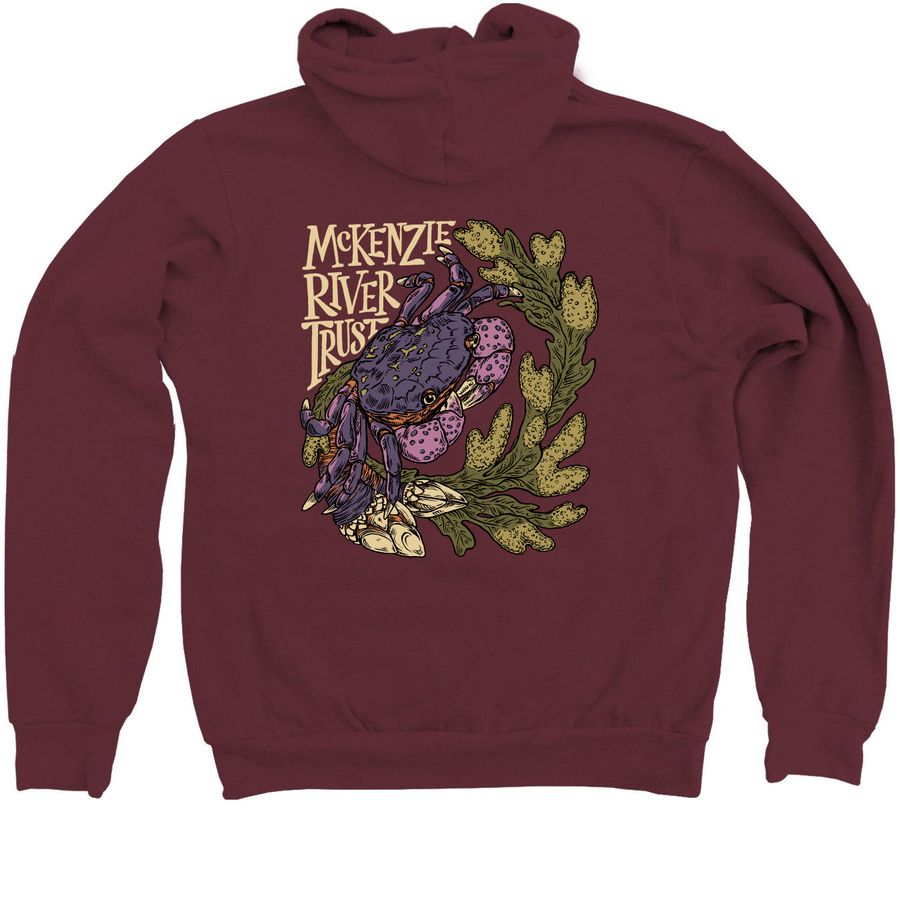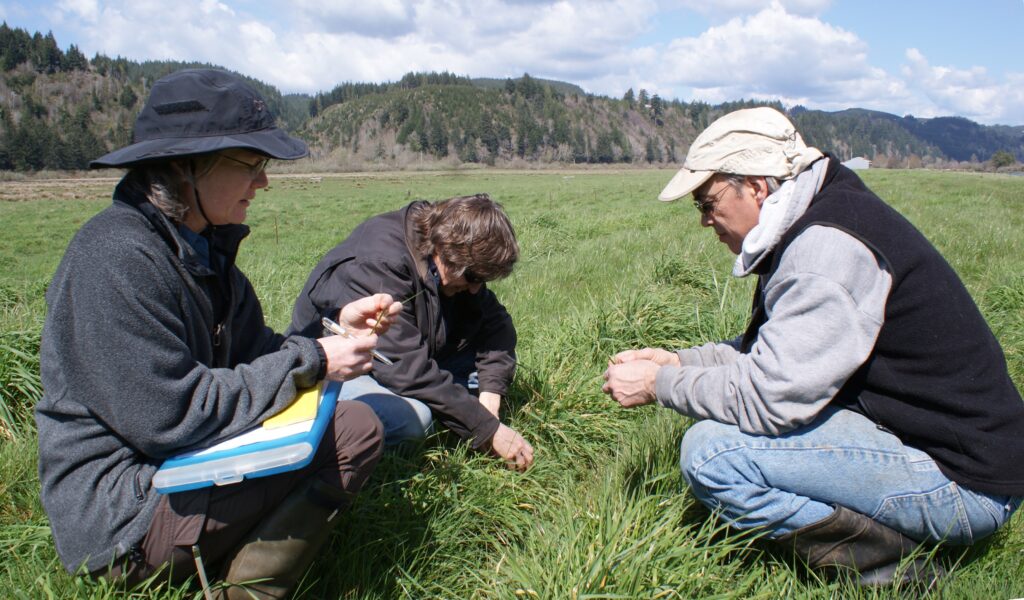
For more than 20 years, wetland scien- tist Laura Brophy has been pioneering research on the wetlands of Oregon’s central coast. Beginning at a time when technology was just beginning to expand with new tools and resources for under- standing our landscape, she has turned questions into new understanding to generate some of the most widely used scientific data for the region. Reflecting on more than two decades of research, Laura highlights the impact of advancing technology to understand coastal wetlands.
“In the early 2000s, we began to better understand the ecology of tidal wetlands. And by the 20-teens, we had the tools and experience to accurately map these areas – and we found that many of them were historically tidal swamps. This is when we began understanding the scale of loss. By studying and mapping the estuaries, we found that over 90% of these tidal swamps had been lost.”
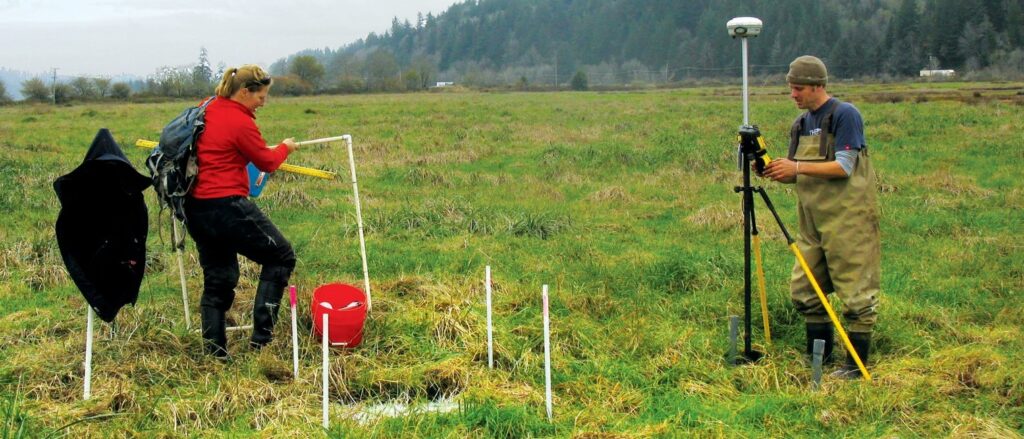
As both a technical researcher and a field ecologist, Laura has brought a unique lens and approach to unveiling a lost understanding of how areas such as the Siuslaw estuary functioned before European settlers moved west. Now this research is being put into restoration practice at McKenzie River Trust as our partners prepare to break ground on a tidal restoration project 10 years in the making.
Forested tidal swamps of the central coast, with their spreading Sitka spruce trees, are a unique estuary feature, especially in the Siuslaw Watershed. The forests are formed among shifting tides that can rise and fall as much as 8 to 10 feet daily. Fed by reliable freshwater flows from the coast range, these forests are able to flourish in brackish waters and formerly lined the river from the upper estuary to the lower tidal marshes. Researchers have found that the soils in these brackish areas are highly ecologically productive.

With lower salinity, soft-bodied invertebrates are able to thrive in the high-nutrient forested environment. As the tide pulses daily, these critters are pumped from the soils and into the wetland channels where they are available for salmon moving between fresh and saltwater environments.
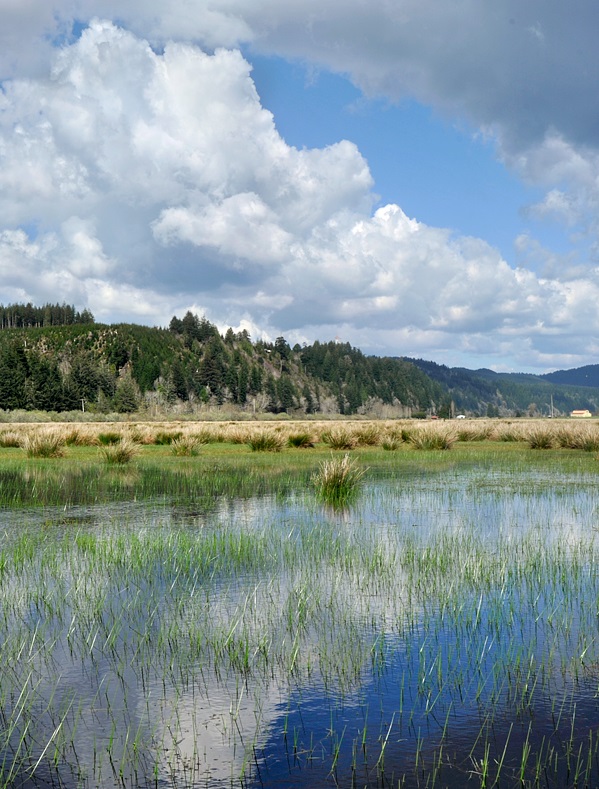
Having focused so much of her efforts on understanding and mapping the historic wetlands of the Siuslaw Basin, Laura is excited that restoration is on the horizon for Waite Ranch, a historic forested and shrub tidal wetland turned cattle ranch in the 1800s. “When we were studying soils at the ranch, I was working on the upstream end of the site taking samples. My auger sank into the ground like butter. I had to stop and absorb what it meant. This site is still carrying its history as a tidal swamp. It was right there in the soft soil below me. I had to pause in that moment and appreciate that beautiful connection to the past.” Looking to the future, Laura hopes that the area becomes an integrated system working with natural forces in place. “To see an in-balance system functioning with the pulse of the tides is deeply soul satisfying.”
With the help of Laura’s research, McKenzie River Trust and our partners at the Confederated Tribes of Coos, Lower Umpqua, and Siuslaw Indians and the Siuslaw Watershed Council, are ready to break ground on restoring nearly 200 acres of this unique habitat lost over the past century. Supported by more than a decade of research, this project will reconnect the land back to the rivers and tides that have shaped it for thousands of years.
